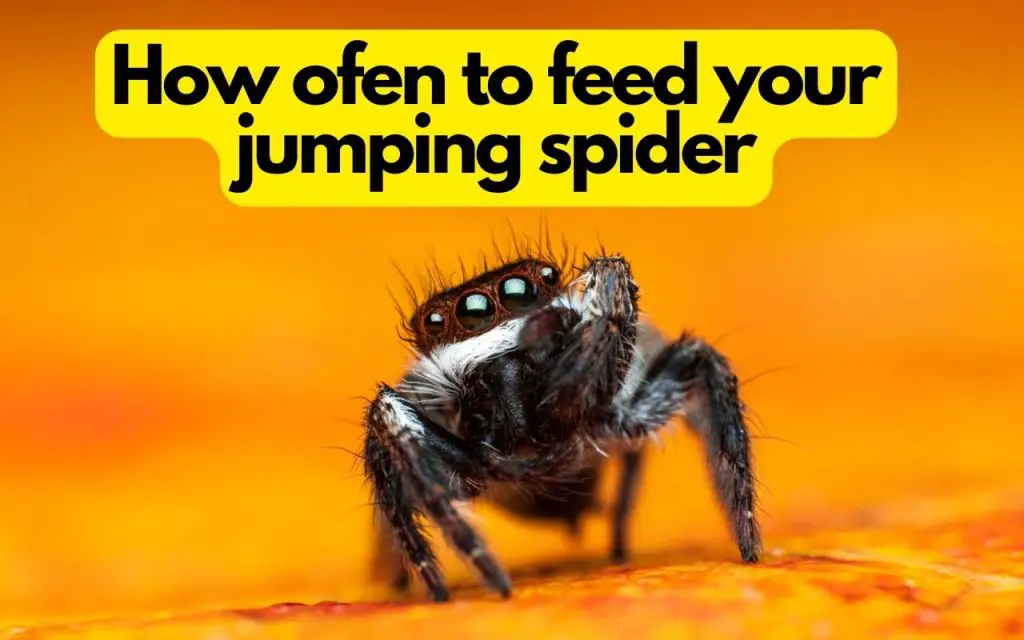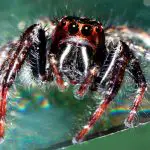Hello there, fellow arachnid enthusiasts! I’m here to unravel the often-debated question: “How often should I feed my jumping spider?” As a seasoned jumping spider keeper, I have had the privilege of housing several species of these tiny, yet captivating creatures, each with their unique feeding habits.
Deciphering the feeding patterns of jumping spiders can seem like a challenging maze to navigate, especially for newcomers to this hobby. But, I assure you, once you get the hang of it, it becomes an engaging activity that bridges the gap between you and these fascinating creatures.
How often should I feed my jumping spider?
Jumping spiders, despite their minuscule size, are predators with a penchant for hunting. They have evolved to thrive in a diverse range of habitats, surviving on an equally varied menu of prey. To create a captive environment that resonates with their natural ecosystem and satiates their nutritional requirements, we must first delve into understanding their diet in the wild.
Jumping spiders are predominantly carnivorous, with a diet rich in insects and other small arthropods. However, the frequency at which they need to feed can vary based on several factors, including their age, size, species, individual preference, and the conditions of their environment.
Key Factors Influencing Feeding Frequency
Before we venture into the specifics of how often you should feed your jumping spider, it’s essential to understand the factors that might influence their feeding frequency:
- Age: Spiderlings, or baby spiders, require more frequent feeding compared to their adult counterparts. This is because they are in a stage of rapid growth and development and hence, have higher nutritional requirements.
- Size: As you may guess, larger species of jumping spiders might require feeding more frequently than smaller ones, due to their greater energy requirements.
- Health Status: If your jumping spider is unwell, recovering from an injury, or under stress, its appetite may decrease. Similarly, spiders nearing a molt often stop feeding a few days in advance.
- Species: Different species of jumping spiders have evolved with unique hunting strategies and energy needs, which can affect their feeding frequency.
- Individual Preferences: Individual spiders, much like us humans, have their own unique appetites. It’s not uncommon to find certain spiders eating more frequently than others, even if they belong to the same species.
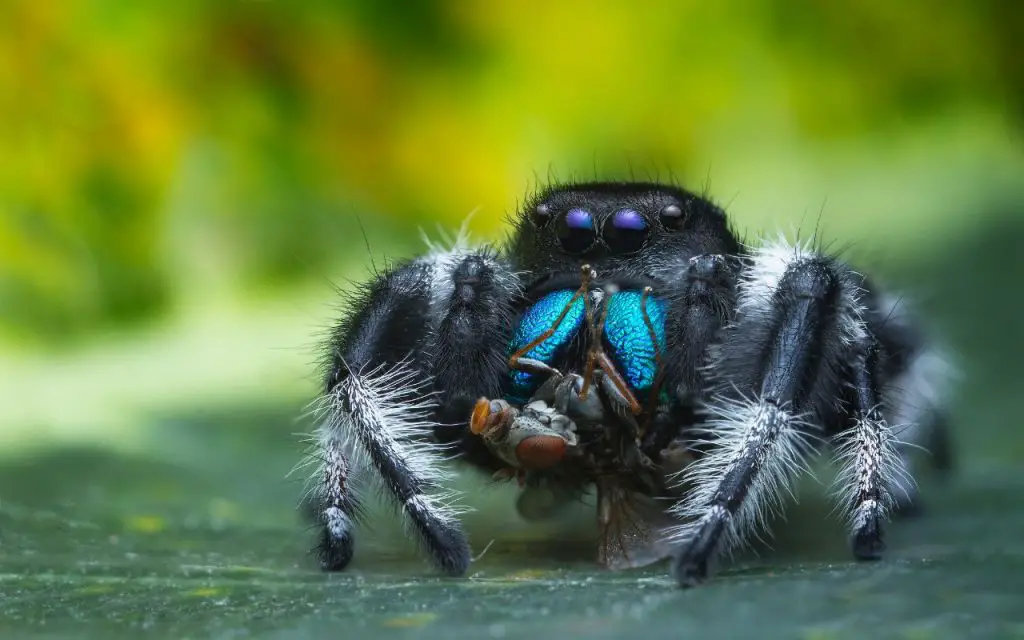
A Comprehensive Guide To Feeding Frequency
Based on my experience with various jumping spider species, I have created a table that serves as a rough guide to feeding frequency. However, bear in mind that individual spiders’ needs can vary greatly, and observation of your pet’s behavior and appetite remains the most accurate indicator.
| Age/Size of Spider | Feeding Frequency |
|---|---|
| Spiderlings | Daily |
| Juveniles | Every other day |
| Adults (small species) | 2-3 times a week |
| Adults (large species) | 3-4 times a week |
It’s worth mentioning that refusal to feed can be a sign of stress, illness, or an impending molt. Conversely, a sudden surge in appetite could indicate a molt on the horizon or, in the case of females, preparation for egg-laying.
The Art of Observing Your Jumping Spider
One of the most effective ways to gauge the appropriate feeding frequency is by observing your spider.
- Activity Levels: A jumping spider that’s actively hunting or seems interested in its surroundings might need to be fed more frequently. If your spider is not engaging with the food you offer, it may be a sign to reduce the feeding frequency.
- Body Condition: A spider that’s underfed may appear visibly smaller or seem dehydrated, while one that’s overfed might look excessively plump or bloated.
- Molting Behavior: If your spider is refusing food and its exoskeleton has taken on a dull appearance, it might be preparing to molt, a process during which spiders often stop feeding.
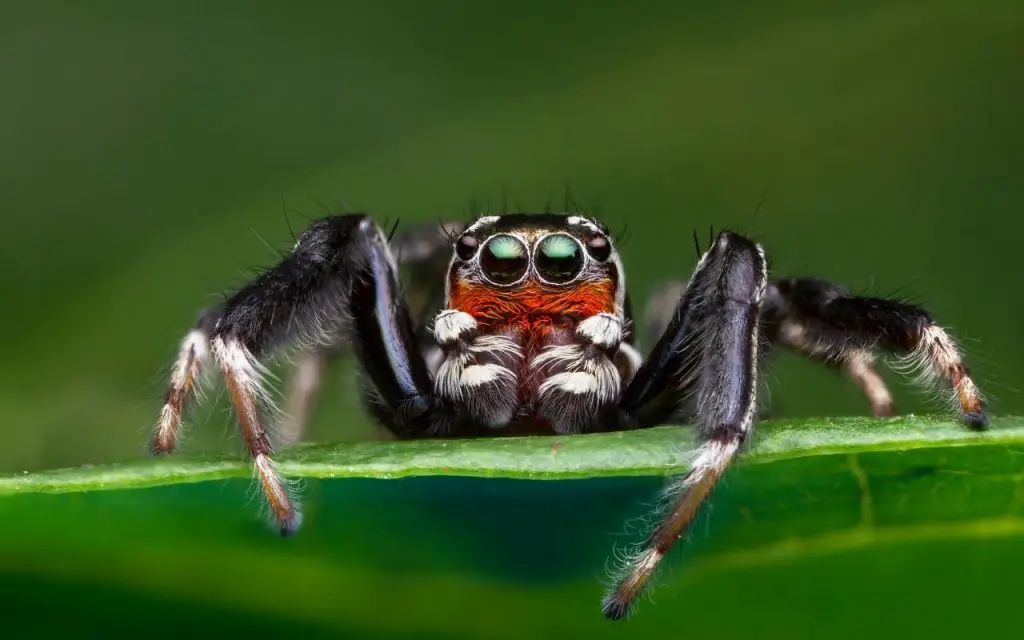
Handy Tips for Feeding Your Jumping Spider
- Variety: Keep your spider’s diet diverse. Offering different types of insects not only keeps your pet interested but also ensures it receives a balanced diet.
- Size Matters: The size of the prey should ideally not be larger than the body of your spider. Large prey can intimidate or harm your spider, while very small prey might not be satisfying enough.
- Safe Source: Always ensure that the insects you feed your spider come from reliable sources to avoid the risk of pesticide exposure or other harmful substances.
- Hydration: Jumping spiders obtain their hydration from the prey they consume and the environment they inhabit. Lightly misting the enclosure every few days can provide additional hydration and mimic their natural habitat.
How often to feed jumping spiders: Final thoughts…
Feeding your jumping spider is more than a simple task; it’s an art. It requires a blend of careful observation, patience, and a dose of trial and error. Understanding the feeding habits of these captivating creatures offers an insightful peek into their unique behaviors and lifestyles, making it one of the most rewarding aspects of jumping spider care.
Remember, each jumping spider is an individual with unique nutritional requirements and feeding preferences. By closely monitoring and adjusting feeding frequency according to your pet’s behavior, you can ensure a healthy and content spider.
Whether you’re embarking on your arachnid-keeping journey or you’re a seasoned spider enthusiast, I hope this guide serves as a helpful resource in understanding the feeding frequency of these remarkable creatures. As always, don’t hesitate to comment or get in touch if there’s anything else you need to know!
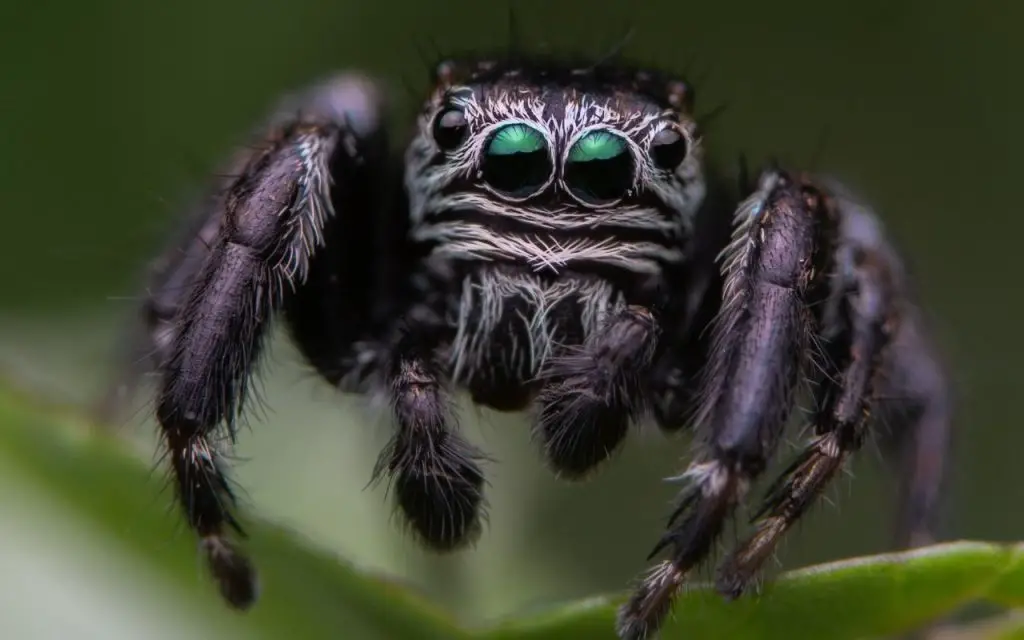
FAQ relating to how jumping spider feeding frequency
How do you know when to feed a jumping spider?
A hungry jumping spider will be alert, and actively exploring its enclosure in the hopes of stalking prey. It may also appear to watching anything that moves near its home. When it comes to feeding, it’s important to remember that jumping spiders are diurnal, and they will less receptive to food from late afternoon onwards.
Can you overfeed a jumping spider?
You can’t really overfeed a jumping spider because they won’t eat to the point of getting sick or overweight (unlike some tarantulas). If you give them too much food, they’ll ignore it rather than eat it. When this happens, you must remove the feeder insects so that they don’t annoy your spider.
How long can jumping spiders live without food?
Compared with larger arachnids, jumping spiders need to eat much more often – ideally two to three times a week. An adult jumping spider could die if it had to go more than a month without food. This is in sharp contrast to some tarantulas which could survive over a year.

